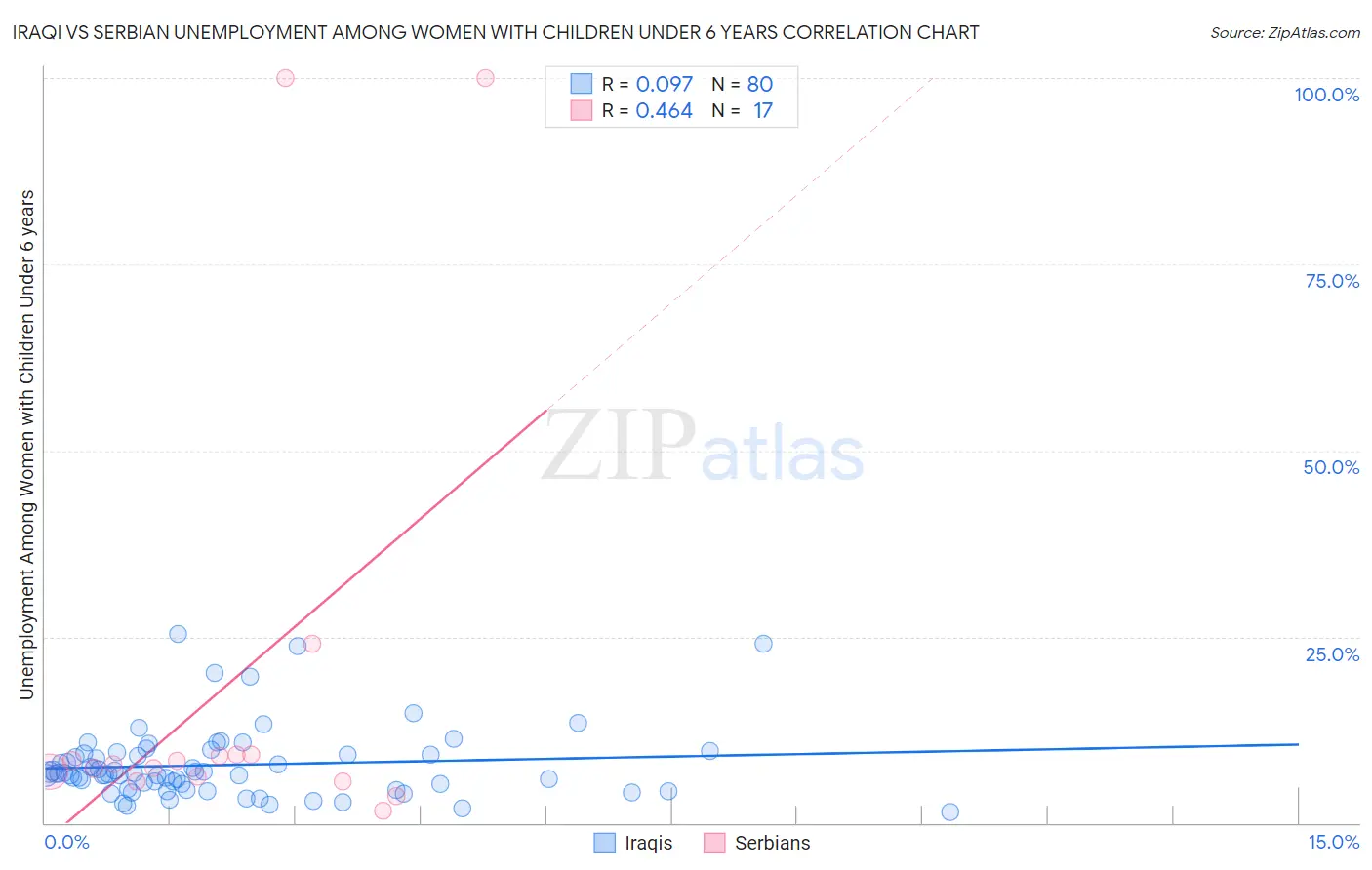Iraqi vs Serbian Unemployment Among Women with Children Under 6 years
COMPARE
Iraqi
Serbian
Unemployment Among Women with Children Under 6 years
Unemployment Among Women with Children Under 6 years Comparison
Iraqis
Serbians
7.3%
UNEMPLOYMENT AMONG WOMEN WITH CHILDREN UNDER 6 YEARS
93.9/ 100
METRIC RATING
120th/ 347
METRIC RANK
7.3%
UNEMPLOYMENT AMONG WOMEN WITH CHILDREN UNDER 6 YEARS
94.5/ 100
METRIC RATING
118th/ 347
METRIC RANK
Iraqi vs Serbian Unemployment Among Women with Children Under 6 years Correlation Chart
The statistical analysis conducted on geographies consisting of 147,802,936 people shows a slight positive correlation between the proportion of Iraqis and unemployment rate among women with children under the age of 6 in the United States with a correlation coefficient (R) of 0.097 and weighted average of 7.3%. Similarly, the statistical analysis conducted on geographies consisting of 212,728,717 people shows a moderate positive correlation between the proportion of Serbians and unemployment rate among women with children under the age of 6 in the United States with a correlation coefficient (R) of 0.464 and weighted average of 7.3%, a difference of 0.18%.

Unemployment Among Women with Children Under 6 years Correlation Summary
| Measurement | Iraqi | Serbian |
| Minimum | 1.5% | 1.6% |
| Maximum | 25.3% | 100.0% |
| Range | 23.8% | 98.4% |
| Mean | 7.8% | 18.8% |
| Median | 6.6% | 7.9% |
| Interquartile 25% (IQ1) | 4.9% | 5.9% |
| Interquartile 75% (IQ3) | 9.2% | 9.1% |
| Interquartile Range (IQR) | 4.3% | 3.2% |
| Standard Deviation (Sample) | 4.8% | 30.9% |
| Standard Deviation (Population) | 4.8% | 30.0% |
Demographics Similar to Iraqis and Serbians by Unemployment Among Women with Children Under 6 years
In terms of unemployment among women with children under 6 years, the demographic groups most similar to Iraqis are South African (7.3%, a difference of 0.070%), Immigrants from Chile (7.3%, a difference of 0.12%), Immigrants from Bosnia and Herzegovina (7.3%, a difference of 0.13%), Immigrants from Zaire (7.3%, a difference of 0.18%), and Immigrants from South Africa (7.3%, a difference of 0.38%). Similarly, the demographic groups most similar to Serbians are South African (7.3%, a difference of 0.11%), Immigrants from Chile (7.3%, a difference of 0.30%), Immigrants from Bosnia and Herzegovina (7.3%, a difference of 0.31%), Immigrants from Kenya (7.3%, a difference of 0.33%), and Immigrants from Zaire (7.3%, a difference of 0.36%).
| Demographics | Rating | Rank | Unemployment Among Women with Children Under 6 years |
| Australians | 96.9 /100 | #109 | Exceptional 7.2% |
| Palestinians | 96.8 /100 | #110 | Exceptional 7.2% |
| Norwegians | 96.7 /100 | #111 | Exceptional 7.2% |
| Israelis | 96.5 /100 | #112 | Exceptional 7.2% |
| Nicaraguans | 96.3 /100 | #113 | Exceptional 7.2% |
| Argentineans | 96.2 /100 | #114 | Exceptional 7.2% |
| Immigrants | Italy | 96.1 /100 | #115 | Exceptional 7.2% |
| Armenians | 95.9 /100 | #116 | Exceptional 7.2% |
| Immigrants | Kenya | 95.4 /100 | #117 | Exceptional 7.3% |
| Serbians | 94.5 /100 | #118 | Exceptional 7.3% |
| South Africans | 94.1 /100 | #119 | Exceptional 7.3% |
| Iraqis | 93.9 /100 | #120 | Exceptional 7.3% |
| Immigrants | Chile | 93.5 /100 | #121 | Exceptional 7.3% |
| Immigrants | Bosnia and Herzegovina | 93.5 /100 | #122 | Exceptional 7.3% |
| Immigrants | Zaire | 93.3 /100 | #123 | Exceptional 7.3% |
| Immigrants | South Africa | 92.5 /100 | #124 | Exceptional 7.3% |
| Pakistanis | 92.2 /100 | #125 | Exceptional 7.3% |
| Immigrants | Burma/Myanmar | 91.9 /100 | #126 | Exceptional 7.3% |
| Jordanians | 91.5 /100 | #127 | Exceptional 7.3% |
| Zimbabweans | 91.5 /100 | #128 | Exceptional 7.3% |
| Slovenes | 89.2 /100 | #129 | Excellent 7.4% |